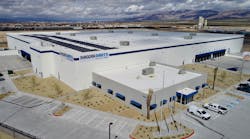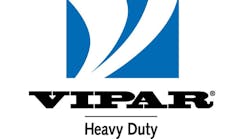Eaton Corporation's fuel-saving Hydraulic Launch Assist (HLA) technology will be used on a south Texas fleet of urban shuttle buses to reduce greenhouse gas emissions.
The shuttle bus emissions initiative was made possible by a $499,974 New Technology Research and Development (NTRD) Grant awarded by the Houston Advanced Research Center (HARC). The grant, announced by HARC Program Director Rudy Smaling, builds on a highly successful 2006 project in which Eaton's HLA systems were installed on 12 refuse trucks under a State of Texas New Technology Research and Development Grant.
"This is an important technology," Smaling said. "It cuts exhaust emissions and fuel costs, making it possible for both operators and the environment to come out ahead. The refuse trucks delivered fuel savings of 25 to 28 percent, and we fully expect similar savings from the shuttle bus application. Eaton is a leader in developing and applying hybrid technologies that cut greenhouse gas emissions, as well as those of nitrous oxide."
"We collaborated with HARC on the refuse truck project and look forward to building on that experience in rolling out HLA technology into the shuttle bus market," said Bradley Bohlmann, business development manager for Eaton Fluid Power Group's Advanced Technology Team. "HARC is a very forward-looking organization, and we could not ask for a better collaborator for the expansion of the HLA system and follow-on emission-reducing technologies."
Eaton's HLA system is a regenerative braking system that captures and stores the vehicle's kinetic energy rather than dissipating it as heat. Braking energy is stored in pressurized accumulators and then used to help accelerate the vehicle. The HLA system is an ideal hybrid technology for vehicles with duty cycles including many starts and stops because it efficiently captures and re-cycles energy using relatively simple, highly-durable components that are easily integrated into conventional drivetrains.








